Key Takeaways
Complete guide to implementing individual artist galleries and digital art portfolios in schools. Learn how to showcase every student's creative work, build comprehensive portfolios, and celebrate artistic achievement.
This comprehensive guide explores how schools can implement effective individual artist gallery systems that honor every student’s creative contributions, document artistic growth over time, and create engaging showcases that inspire continued creative exploration and excellence.
Understanding the Individual Artist Gallery Approach
Traditional school art programs face a fundamental challenge: dozens or hundreds of talented student artists create thousands of exceptional artworks annually, yet physical gallery space allows displaying only a tiny fraction of this creative output. The result? Most student artwork receives brief classroom display before being returned home or stored away, never receiving the public recognition and celebration it deserves.
The Limitations of Traditional Art Recognition
Physical art shows and hallway displays, while valuable, inherently restrict recognition opportunities:
Space Constraints: Gallery walls accommodate only limited pieces, forcing difficult curatorial decisions about which artwork deserves public display while excellent work from many students remains hidden.
Temporary Exhibition: Physical shows typically run for brief periods—an evening showcase or week-long display—before being dismantled, meaning recognition windows are fleeting and many stakeholders miss opportunities to view student work.
Selection Bias: Limited space often results in featuring only advanced students, competition winners, or certain preferred media, leaving beginning artists, experimental work, and diverse creative approaches underrepresented.
Single-Piece Representation: Physical limitations typically allow each student to show only one or two pieces, failing to represent the breadth of their creative exploration, skill development, or artistic range across different media and approaches.
Documentation Gaps: Once physical shows conclude, comprehensive documentation of exhibited work often doesn’t exist, making it difficult for students to reference their own achievements or for schools to demonstrate program quality over time.
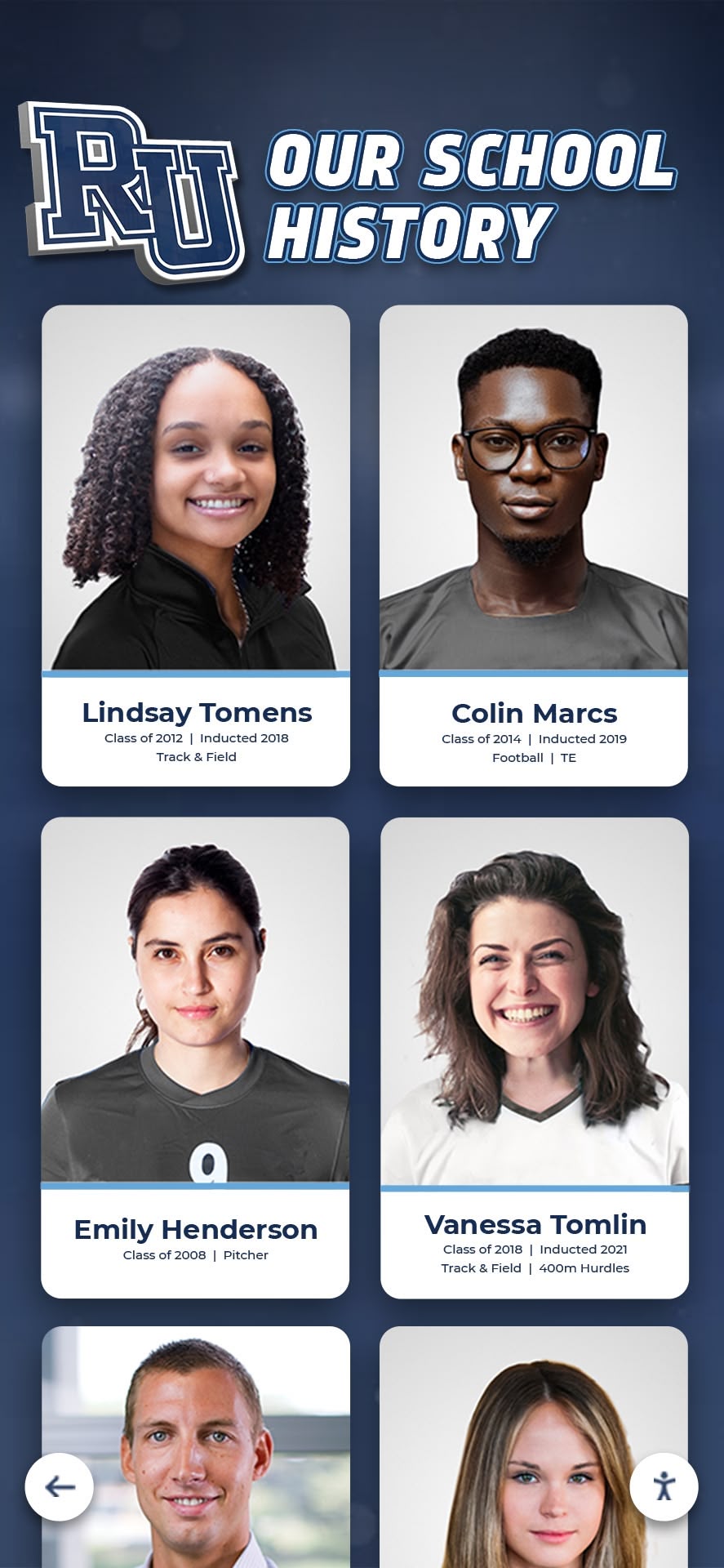
The Individual Artist Gallery Advantage
Digital individual artist galleries overcome these traditional limitations while providing capabilities impossible with physical displays:
Unlimited Recognition Capacity: Every student receives dedicated gallery space showcasing comprehensive portfolios of their artwork rather than competing for limited wall space or exhibition opportunities.
Permanent Accessibility: Digital galleries remain perpetually accessible, allowing students, families, and broader communities to explore artwork at any time rather than during brief exhibition windows.
Comprehensive Creative Portfolios: Students can showcase extensive bodies of work demonstrating artistic development, experimentation across media, and creative range impossible to represent through single-piece physical displays.
Multiple Viewing Options: Digital platforms enable viewing artwork in various contexts—browsing individual artist galleries, exploring work by medium or theme, comparing student development across time periods, or discovering art through searchable databases.
Professional Portfolio Development: Individual galleries serve as ongoing digital portfolios students can share for college applications, scholarship opportunities, competition submissions, and personal artistic development documentation.
Solutions like Rocket Alumni Solutions provide purpose-built platforms specifically designed for educational art programs, offering intuitive gallery management, professional presentation quality, and features tailored to showcasing student creative work effectively.
Essential Components of Effective Individual Artist Galleries
Comprehensive individual artist galleries include multiple elements that collectively tell complete stories of each student’s creative journey and artistic achievements.
Student Artist Profile Information
Each individual gallery should begin with clear profile information contextualizing the artwork and celebrating the artist:
Basic Profile Elements
- Student artist name and graduation year
- Current grade level and years in art program
- Primary artistic interests and preferred media
- Art courses completed and current enrollment
- Creative awards, competitions, and exhibitions
Enhanced Profile Content
- Artist statement describing creative philosophy
- Artistic influences and inspiration sources
- Creative goals and future aspirations
- Profile photo or self-portrait
- Contact information for inquiries (when appropriate)
These profile elements transform simple artwork collections into personalized artistic identities, helping viewers understand the creator behind the creative work while giving students practice articulating their artistic vision and development.
Comprehensive Artwork Documentation
Individual pieces within artist galleries deserve thorough documentation that provides context and celebrates creative achievement:
Essential Artwork Information:
- Artwork title and creation date
- Medium, materials, and techniques used
- Dimensions and physical characteristics
- Course or context in which work was created
- Grade level when artwork was completed
Enhanced Artwork Context:
- Artist statement explaining inspiration and creative process
- Technical challenges overcome during creation
- Skills developed or demonstrated through the work
- Influences or artistic movements referenced
- Intended meaning or viewer experience goals
Visual Documentation:
- High-resolution photographs capturing fine details
- Multiple angles for three-dimensional work
- Detail shots highlighting technical skill or texture
- Process documentation showing creative development
- Comparison images demonstrating before/after or evolution
This comprehensive documentation elevates student artwork from simple images to complete creative narratives that honor the dedication, skill development, and artistic vision each piece represents.
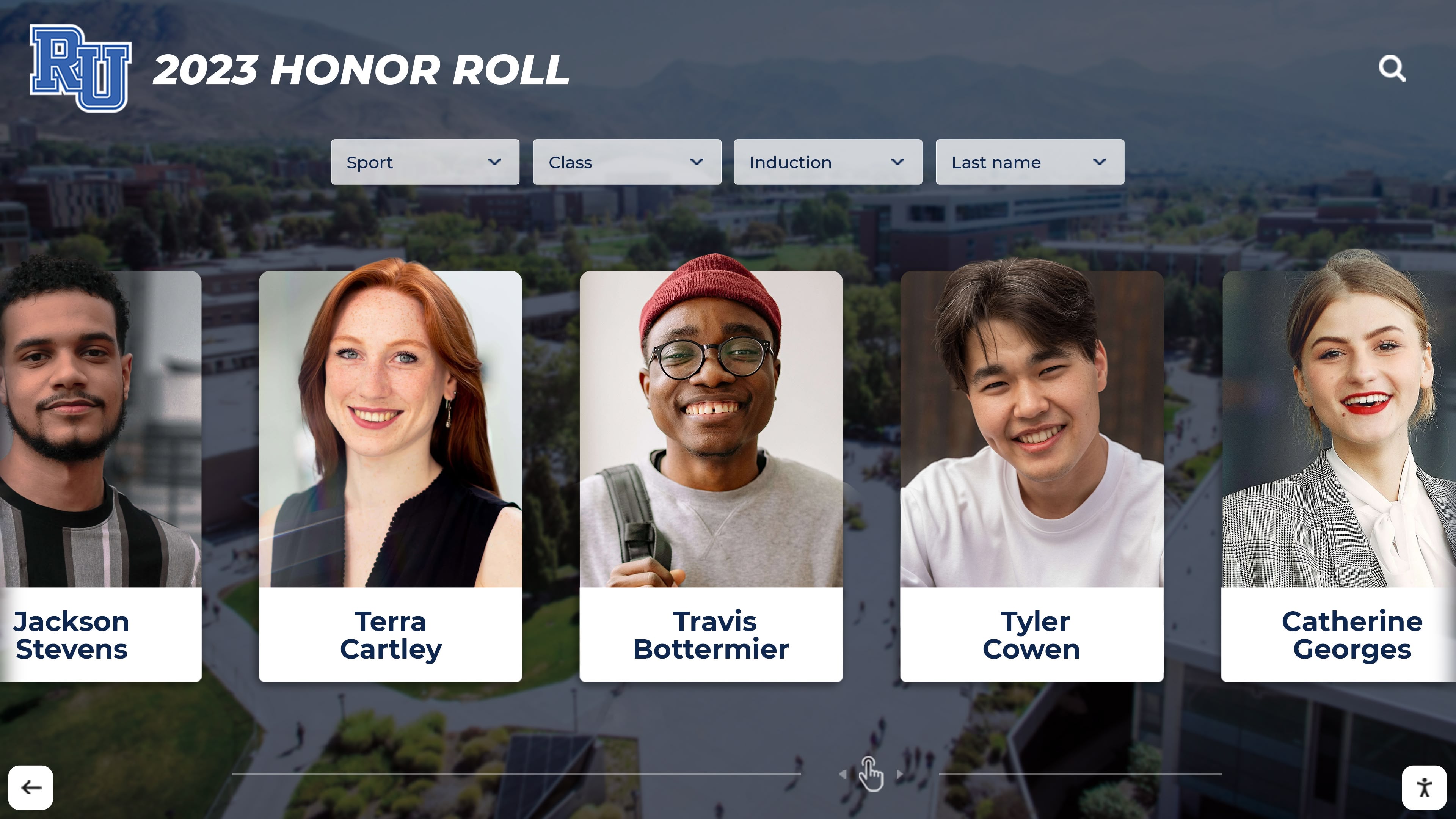
Artistic Development Documentation
The most powerful individual artist galleries don’t simply showcase finished work—they document creative growth and artistic development over time:
Portfolio Evolution Tracking:
- Chronological organization showing skill development
- Comparison features highlighting technical growth
- Progression documentation across different media
- Style evolution demonstrating artistic maturation
- Increasing complexity and sophistication over time
Creative Process Documentation:
- Sketches and planning materials showing ideation
- Work-in-progress photography documenting stages
- Experimental pieces exploring new techniques
- Failed attempts and learning moments (when students consent)
- Reflection statements about creative journey
Skills and Techniques Mastery:
- Documentation of new media or techniques learned
- Technical challenges successfully addressed
- Artistic problem-solving demonstrations
- Cross-media experimentation and integration
- Advanced technique application in complex works
This developmental documentation proves particularly valuable for college applications and scholarship portfolios, demonstrating not just current skill level but sustained artistic growth, willingness to experiment, and dedication to creative development.
Understanding how student recognition increases future success helps schools appreciate the long-term impact of comprehensive creative achievement documentation.
Building Comprehensive Individual Artist Galleries
Successful implementation of individual artist gallery systems requires strategic planning, systematic content development, and sustainable management approaches.
Phase 1: Planning and System Design
Define Gallery Scope and Objectives:
Before selecting technology or beginning content creation, establish clear goals for your individual artist gallery program:
- Will galleries include all visual art students or only advanced program participants?
- How many years of student work will galleries encompass (current year, all high school years, K-12 comprehensive)?
- What types of artwork will be featured (finished pieces only, or also process work and experiments)?
- How will galleries integrate with college application portfolio requirements?
- What privacy and permission considerations need to be addressed?
Assess Technical Infrastructure Needs:
Individual artist galleries require appropriate technology platforms and content management capabilities:
- Cloud-based systems allowing art teachers to update galleries from any device
- Intuitive interfaces requiring no technical expertise for content management
- High-quality image display supporting fine art reproduction standards
- Searchable databases enabling browsing by artist, medium, year, or course
- Web accessibility allowing families and admissions offices to view galleries remotely
- Security and privacy controls protecting student work and personal information
Establish Content Standards and Workflows:
Consistent quality across all individual galleries requires clear standards and systematic processes:
- Artwork photography specifications ensuring professional presentation
- Required information fields for each piece (title, medium, statement, etc.)
- Artist statement guidelines and length parameters
- Image resolution and file format requirements
- Approval workflows before content becomes publicly visible
- Update schedules and maintenance responsibilities
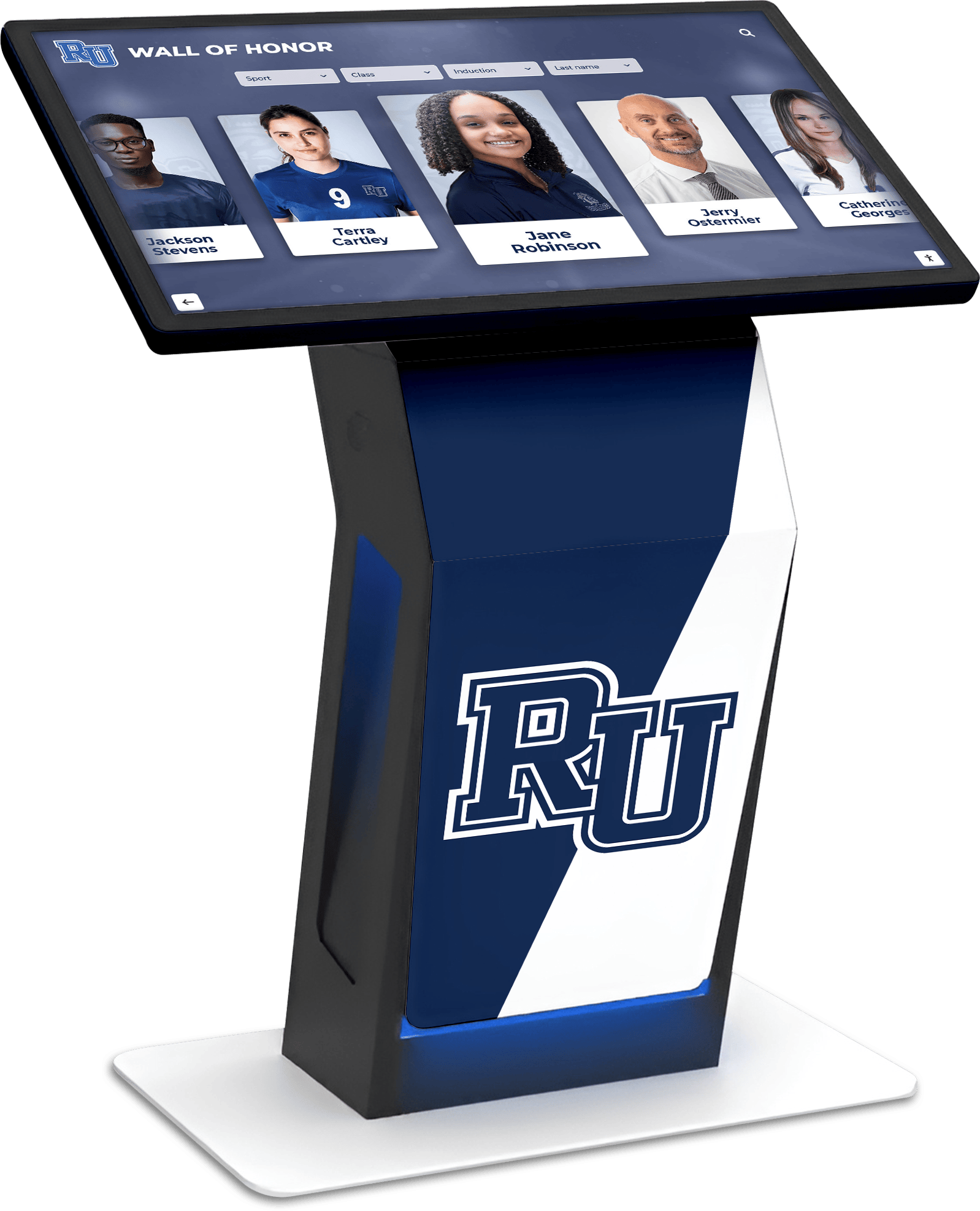
Phase 2: Content Creation and Gallery Population
Systematic Artwork Photography:
Professional-quality documentation ensures student work receives appropriate presentation:
Photography Best Practices:
- Consistent neutral backgrounds eliminating distractions
- Proper lighting avoiding glare, shadows, or color distortion
- High-resolution capture preserving fine details and texture
- Multiple angles documenting three-dimensional works completely
- Scale reference when size is significant to understanding work
- Color calibration ensuring accurate reproduction
Efficient Photography Workflows:
- Dedicated photography station with consistent setup
- Batch photography sessions at project completion
- Student involvement in photographing their own work
- Digital asset naming conventions for organization
- Immediate backup of all digital photography
- Quality review before adding images to galleries
Gathering Artwork Information:
Complete documentation requires systematic information collection from student artists:
- Student-completed forms providing titles, statements, and technical information
- Teacher input about course context, skills demonstrated, and achievement level
- Competition or exhibition documentation for recognized pieces
- Permission forms authorizing public display and reproduction
- Optional artist interviews adding depth to portfolio narratives
Building Historical Content:
Many schools implement galleries retrospectively, adding artwork from previous years or semesters:
Phased Implementation Approach:
- Phase 1: Current semester/year artwork with comprehensive documentation
- Phase 2: Previous year artwork with available documentation
- Phase 3: Significant historical works representing program evolution
- Phase 4: Systematic backfilling of additional historical content over time
This phased approach allows earlier launch while distributing content development workload manageably across extended timeframes.
Phase 3: Student and Family Engagement
Launching Individual Artist Galleries:
Strategic launch creates awareness and establishes galleries as valued program components:
- Art program assembly introducing gallery system and celebrating inaugural student portfolios
- Family communication explaining how to access and explore individual galleries
- Open house event allowing in-person demonstration and celebration
- Social media campaign featuring selected student portfolios and artwork
- Integration with existing school art shows, linking physical exhibitions to comprehensive online galleries
Ongoing Engagement Strategies:
Sustained visibility ensures galleries remain active and valued rather than becoming static archives:
- Regular announcements highlighting newly added artwork or featured artists
- Student gallery update notifications sent to families
- Integration with parent-teacher conferences, referencing student gallery development
- Classroom activities using galleries for peer feedback and artistic discussion
- Art program showcases promoting comprehensive creative achievement beyond physical exhibitions
Student Ownership and Curatorial Development:
Individual galleries provide opportunities for students to develop curatorial skills and artistic self-presentation:
- Student selection of which pieces to feature prominently in portfolios
- Writing artist statements developing ability to articulate creative vision
- Organizing work thematically or chronologically to tell coherent artistic narratives
- Updating galleries independently (with teacher oversight) as new work is completed
- Sharing gallery links for college applications, competitions, and personal networking
This student involvement transforms galleries from teacher-managed archives into authentic student-owned portfolios reflecting individual artistic identities and curatorial choices.
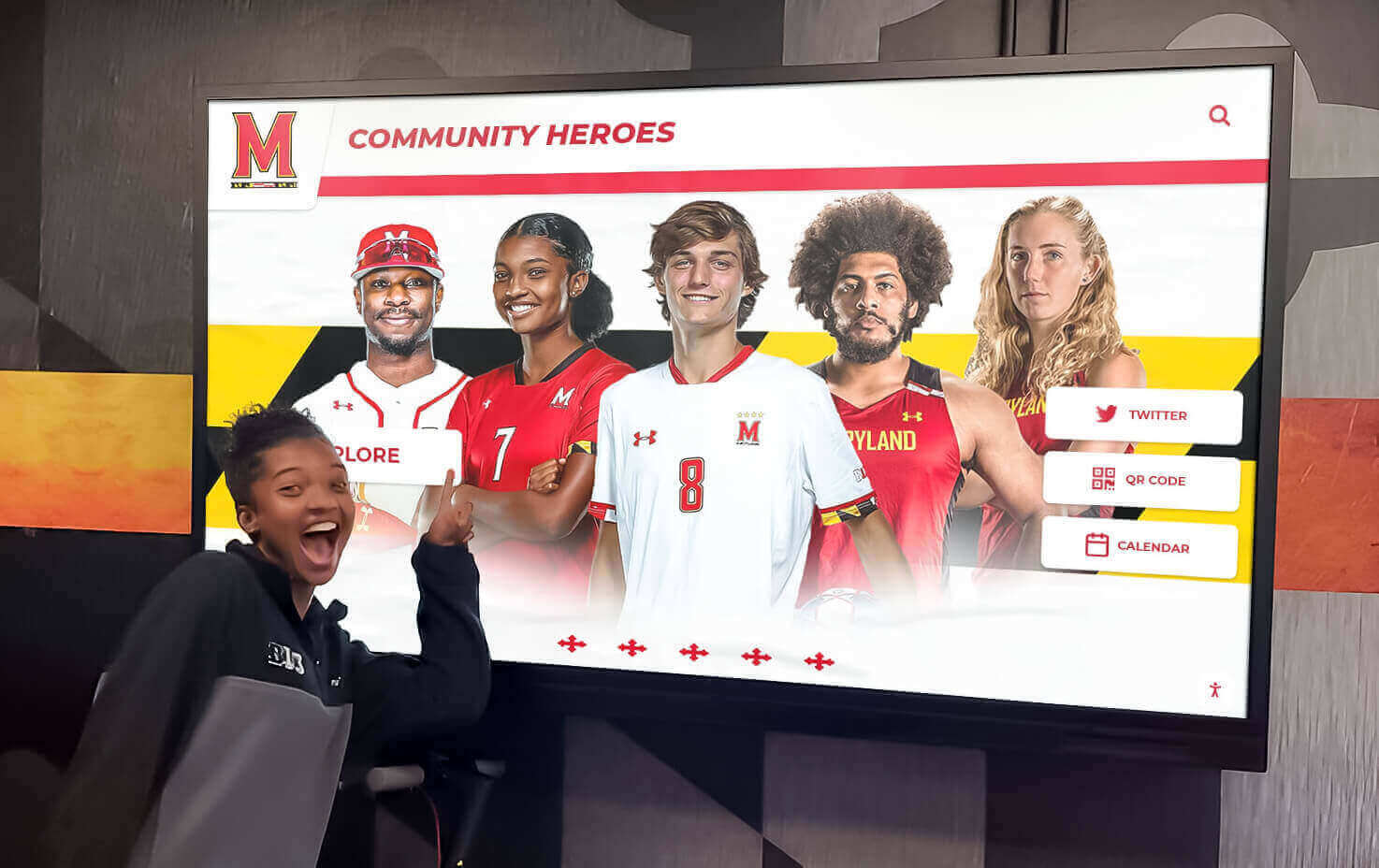
Showcasing Diverse Media and Creative Approaches
Comprehensive individual artist galleries celebrate the full range of creative media, techniques, and artistic approaches students explore throughout their educational journey.
Traditional Media Documentation
Drawing and Illustration:
- Graphite, charcoal, and ink drawings with detail shots showing technique
- Colored pencil and pastel work capturing color accuracy and blending skill
- Mixed media illustrations combining multiple drawing approaches
- Observational studies and life drawing demonstrating foundational skills
- Illustrative narratives and sequential art projects
Painting and Color Work:
- Watercolor paintings photographed to capture translucency and wash techniques
- Acrylic paintings with detail images showing brushwork and texture
- Oil painting documentation including surface finish and impasto effects
- Experimental painting techniques and non-traditional applications
- Color theory demonstrations and palette development studies
Printmaking:
- Relief prints (linocut, woodcut) showing both blocks and final prints
- Intaglio work demonstrating technical etching and engraving skills
- Screen printing including registration and layering complexity
- Monoprints capturing experimental and unique impression qualities
- Edition documentation showing consistency across multiple prints
Three-Dimensional and Sculptural Work
Three-dimensional artwork requires specialized documentation approaches capturing physical presence impossible in single photographs:
Sculpture Documentation:
- Multiple angle photography showing work from various viewpoints
- Detail shots highlighting surface treatment, texture, and joinery
- Scale reference establishing size and presence
- Installation photography showing environmental context
- Process documentation from armature through surface finishing
Ceramics and Pottery:
- Form photography showing profile, overhead, and base views
- Interior shots for functional vessels
- Surface detail capturing glaze effects, texture, and decoration
- Demonstration of pieces in use for functional ceramics
- Firing process documentation from greenware through finished work
Installation and Environmental Art:
- Wide shots establishing full installation scope
- Detail photography highlighting components and interactions
- Documentation of viewer engagement and experiential aspects
- Time-lapse or video capture for temporal or kinetic elements
- Installation process photographs showing construction and assembly
Digital Art and New Media
Contemporary art programs increasingly incorporate digital creation requiring specialized presentation approaches:
Digital Illustration and Graphic Design:
- High-resolution exports preserving detail and color accuracy
- Process screenshots showing software techniques and development stages
- Multiple variations or iterations demonstrating design refinement
- Final applications showing designs in context (publications, websites, products)
- Technical specifications about software, tools, and approaches used
Photography:
- Full image presentation with technical metadata (camera settings, equipment)
- Artist statements about photographic concept, style, and vision
- Series presentation showing thematic or narrative photographic projects
- Before and after comparisons for edited/processed images
- Exhibition or publication documentation for recognized work
Video, Animation, and Time-Based Media:
- Video embedding with playback directly in gallery spaces
- Stills or thumbnails representing key moments for preview
- Technical credits and software/techniques documentation
- Storyboards or concept art showing planning and development
- Screening information for work shown in festivals or exhibitions
Understanding comprehensive student recognition approaches helps schools create gallery systems that celebrate achievement across all creative media and skill levels.
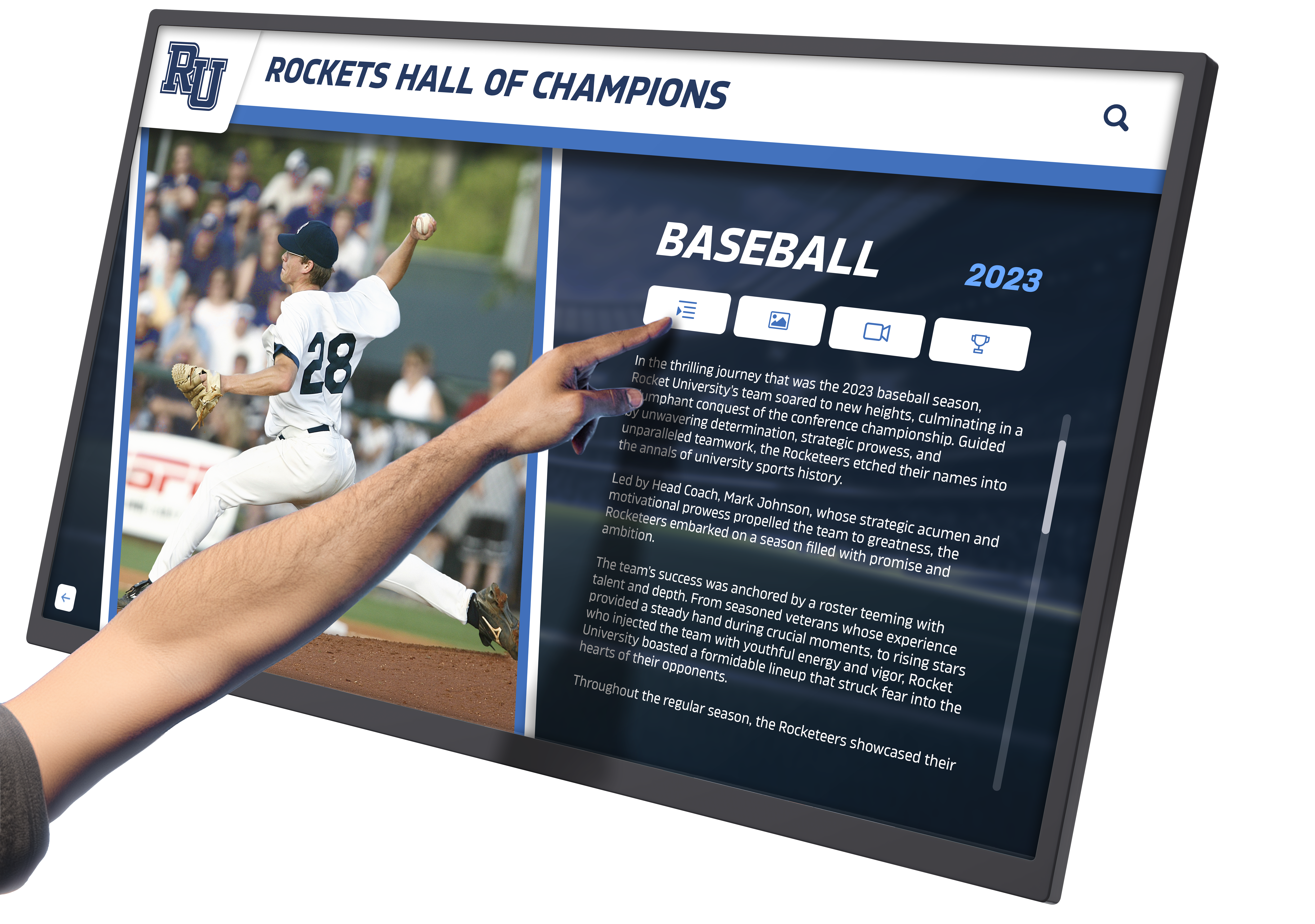
Integrating Galleries with Art Program Goals and Curriculum
Individual artist galleries serve educational purposes beyond simply showcasing finished work when thoughtfully integrated with broader program objectives.
Supporting Artistic Growth and Reflection
Portfolio Reviews and Self-Assessment:
Digital galleries facilitate structured reflection supporting metacognitive development:
- Semester portfolio reviews where students curate selections representing growth
- Written reflections analyzing technical development and artistic evolution
- Goal-setting activities based on gallery review identifying growth areas
- Peer critique sessions using galleries for shared examination of work
- Teacher conferences referencing gallery development over time
Documenting Learning Objectives Achievement:
Galleries provide evidence of curriculum mastery and skill development:
- Organized by unit or learning objective showing skill progression
- Tagged with technical skills demonstrated (perspective, color mixing, figure drawing, etc.)
- Linked to rubrics or assessment criteria with evaluation components
- Documented with teacher feedback and guidance throughout creative process
- Connected to arts standards demonstrating curriculum alignment
College Application and Scholarship Support
Individual artist galleries serve crucial roles supporting students’ post-secondary educational opportunities:
Application Portfolio Development:
- Comprehensive artwork libraries from which students can select application portfolios
- Chronological development documentation demonstrating sustained commitment
- Diverse media representation showing technical versatility
- Artist statements ready for adaptation to application requirements
- Digital format simplifying submission to online application systems
Scholarship Opportunity Support:
- Professional portfolio presentation impressing scholarship committees
- Documentation of awards, competitions, and exhibition participation
- Evidence of artistic growth and dedication over multiple years
- Ready availability when unexpected opportunities arise
- Professional online presence complementing paper applications
Many students discover that maintaining comprehensive individual galleries throughout high school significantly reduces stress when application deadlines approach, providing extensive material from which to curate targeted portfolios rather than scrambling to document work retrospectively.
Professional Practice and Career Readiness
Individual artist galleries introduce students to professional art world practices:
Curatorial Skills Development:
- Selection and sequencing decisions shaping portfolio narratives
- Writing clear, engaging artist statements explaining creative vision
- Presenting work professionally with consistent quality and presentation
- Understanding audience and context for different viewing situations
- Maintaining organized digital archives of creative work
Networking and Self-Promotion:
- Shareable portfolio links for internship and opportunity applications
- Professional online presence establishing artistic identity
- Documentation supporting inquiries, commissions, or sales opportunities
- Social media integration amplifying reach and visibility
- Connection building with art programs, galleries, and creative professionals
These professional practices prepare students for creative careers while providing valuable experience regardless of ultimate career paths, as portfolio development, self-presentation, and curatorial thinking transfer broadly across fields.
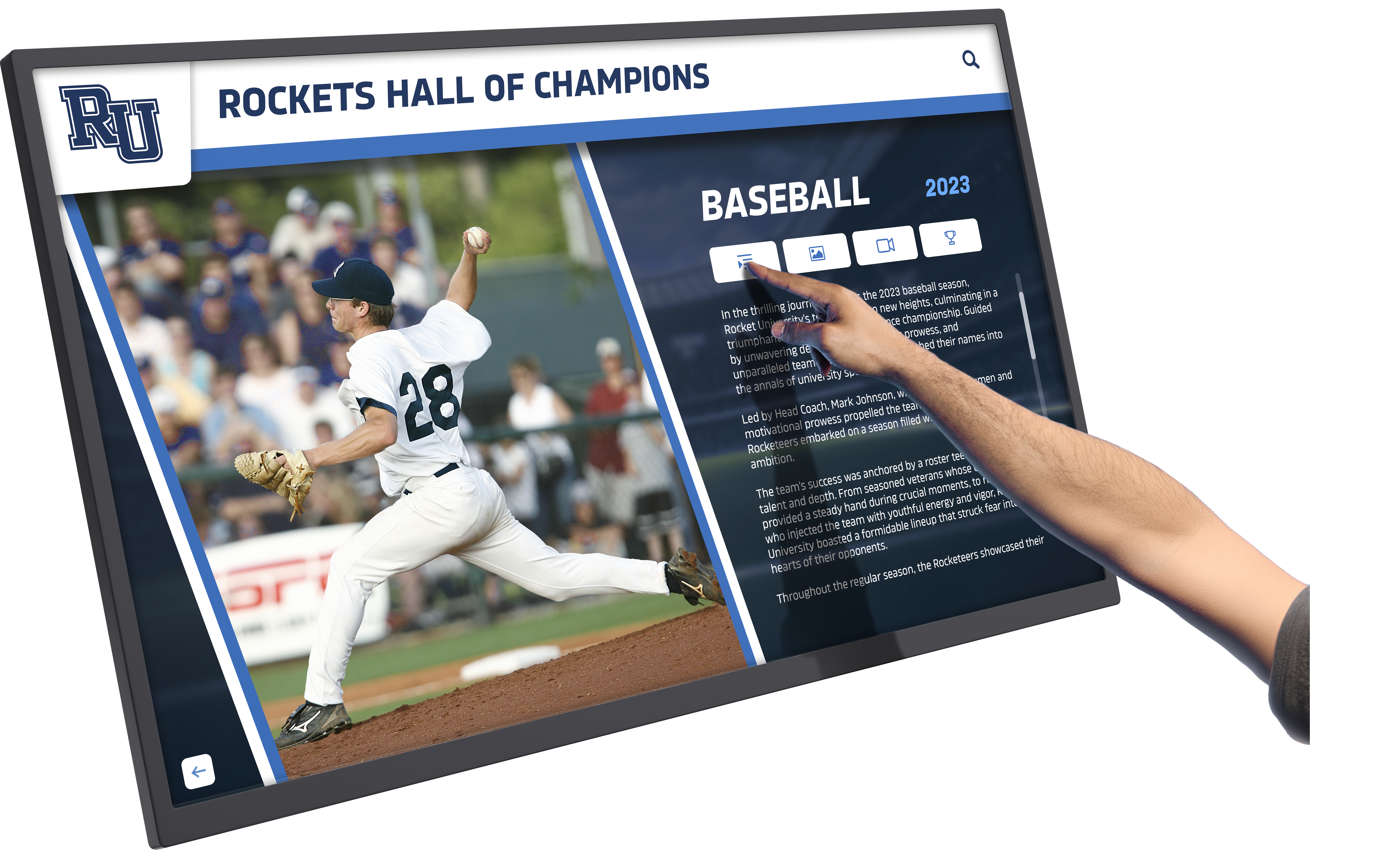
Expanding Recognition Beyond Individual Galleries
While individual artist galleries form the core of comprehensive art recognition, schools enhance programs by incorporating additional showcase components.
Thematic Exhibitions and Curated Collections
Virtual Exhibition Spaces:
Beyond individual galleries, schools can create curated virtual exhibitions grouping work thematically:
- Annual student art show documentation preserving temporary physical exhibitions permanently
- Medium-specific showcases (painting exhibition, photography show, ceramics gallery)
- Thematic exhibitions exploring concepts across multiple student artists
- Senior artist showcases celebrating graduating students’ comprehensive portfolios
- Competitive exhibition archives documenting juried show participants and award winners
Cross-School or Community Collaborations:
- District-wide student art exhibitions featuring work from multiple schools
- Community partnership showcases displayed in local libraries, businesses, or municipal buildings
- Regional or state arts education exhibitions and competitions
- Virtual exchange exhibitions connecting students with peers nationally or internationally
- Collaborative themed projects involving multiple classes or schools
Art Program History and Legacy Documentation
Individual galleries collectively create comprehensive institutional art program archives:
Historical Program Documentation:
- Decade-by-decade galleries showing program evolution over time
- Featured alumni artists highlighting successful creative graduates
- Significant program milestones, achievements, and recognitions
- Art teacher legacies celebrating faculty contributions across years
- Facility evolution showing studio spaces, equipment, and resources development
Program Promotion and Recruitment:
- Demonstration of program quality and comprehensive curriculum
- Evidence of diverse creative opportunities and media explored
- Student success stories for recruitment and program advocacy
- Documentation supporting arts education funding and resource requests
- Community awareness building about program value and achievements
Solutions like comprehensive arts recognition systems help schools showcase creative programs effectively while honoring every student’s artistic contributions.
Recognition of Artistic Achievement and Excellence
While individual galleries celebrate all students inclusively, additional recognition honors exceptional achievement:
Competition and Award Recognition:
- Scholastic Art Awards participation and award recipients
- State, regional, and national competition results
- Juried show acceptances and exhibition opportunities
- Portfolio assessment and evaluation achievements
- Arts-specific scholarships and recognitions
Featured Artist Programs:
- Monthly or quarterly featured student artist spotlights
- In-depth profiles with extended interviews and process documentation
- Recognition ceremonies celebrating significant achievements
- Display of award-winning work in prominent school locations
- Social media campaigns highlighting featured artists
This balanced approach ensures every student receives comprehensive gallery space while exceptional achievements receive appropriate additional celebration and visibility.
Best Practices for Sustainable Gallery Programs
Long-term success requires thoughtful approaches to content management, student privacy, technical maintenance, and program evolution.
Efficient Content Management Workflows
Streamlined Update Processes:
- Integration with course completion timelines (unit end, semester close)
- Batch upload capabilities adding multiple artworks simultaneously
- Template systems ensuring consistent information collection
- Student self-submission portals with teacher approval workflows
- Scheduled update times maintaining regular content refreshment
Distributed Responsibilities:
- Primary gallery administrator overseeing system and policies
- Multiple art teachers managing their own students’ galleries
- Student ambassadors assisting with photography and information gathering
- Parent volunteers helping with documentation and data entry (when appropriate)
- Technology support staff handling technical issues and system maintenance
Privacy, Permissions, and Ethical Considerations
Student Privacy Protection:
- Comprehensive media release forms obtained before creating galleries
- Opt-out provisions for families preferring limited online presence
- Graduation year rather than specific age or birth information
- Limited personally identifiable information in public galleries
- Ability to remove or restrict content upon student or family request
Artwork Rights and Attribution:
- Clear policies about artwork ownership and reproduction rights
- Attribution ensuring student artists receive credit for creative work
- Guidelines about school use of student work for promotional purposes
- Protections against unauthorized reproduction or commercial use
- Education about copyright and intellectual property for student artists
Content Appropriateness:
- Review processes ensuring age-appropriate content
- Guidelines about sensitive subject matter and artistic expression
- Balance between supporting artistic freedom and maintaining school-appropriate presentation
- Respectful treatment of cultural, religious, and personal themes
- Clear policies addressing potentially controversial content
Technical Sustainability and Platform Selection
Choosing Appropriate Technology:
Successful long-term gallery programs require reliable, maintainable technology platforms:
- Cloud-based systems avoiding local server maintenance and backup complexities
- Intuitive interfaces art teachers can manage without technical expertise
- Mobile-responsive designs working across desktop, tablet, and smartphone devices
- Reliable uptime and technical support ensuring consistent accessibility
- Reasonable cost structures sustainable within school arts program budgets
- Data portability allowing content export if platform changes become necessary
Platforms like Rocket Alumni Solutions provide purpose-built systems specifically designed for educational recognition including art programs, offering appropriate features without complexity of generic content management systems or limitations of basic website builders.
Maintaining Content Quality Over Time:
- Regular content audits removing outdated or low-quality documentation
- Photography standard enforcement maintaining professional presentation
- Systematic updates ensuring galleries remain current
- Broken link and image checking preventing technical degradation
- Periodic redesign or refresh maintaining contemporary appearance
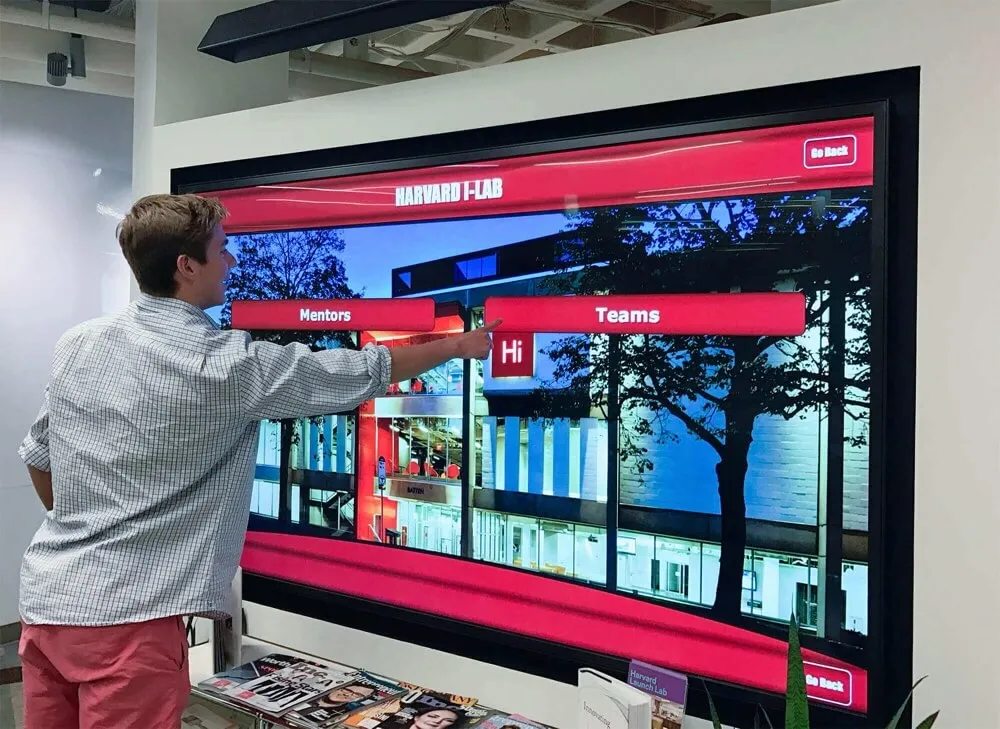
Measuring Individual Artist Gallery Impact
Assessing program effectiveness demonstrates value while identifying improvement opportunities.
Quantitative Metrics
Engagement Analytics:
- Gallery view counts and unique visitor statistics
- Most-viewed individual galleries and artworks
- Search patterns revealing how users explore content
- Time spent engaging with galleries and individual pieces
- Geographic reach showing family, alumni, and broader community access
Program Coverage:
- Percentage of art students with individual galleries
- Artwork per student average demonstrating portfolio comprehensiveness
- Media diversity showing curriculum breadth
- Update frequency maintaining current content
- Historical depth documenting multi-year student development
Educational Outcomes:
- College application portfolio use by students
- Arts-specific scholarship submissions and awards
- Portfolio assessment scores and evaluations
- Competition participation leveraging gallery content
- Alumni feedback about gallery value in educational progression
Qualitative Assessment
Student Perspectives:
- Confidence in artistic ability and creative identity
- Pride in work and willingness to share publicly
- Understanding of personal artistic growth and development
- Curatorial skill development and self-presentation abilities
- Motivation to continue creating art and pursuing creative opportunities
Teacher Observations:
- Student investment in creating gallery-worthy work
- Quality of artistic reflection and statement writing
- Engagement with portfolio review and self-assessment
- Peer interaction and constructive critique culture
- Sustained creative exploration and risk-taking
Family and Community Impact:
- Family engagement with student creative work
- Community awareness of school arts program quality
- Alumni connection to school arts programs
- Prospective family interest during recruitment
- External recognition of program excellence
Data-driven assessment ensures gallery programs deliver meaningful value justifying continued investment while identifying opportunities for enhancement and improved student service.
Conclusion: Honoring Every Student’s Creative Journey
Schools individual artist galleries represent fundamental shifts in how educational institutions honor student creative work and support artistic development. By providing every student with dedicated digital portfolio space, schools demonstrate that all creative contributions matter, every artistic voice deserves to be heard, and comprehensive documentation of creative growth is valuable regardless of ultimate career paths or post-secondary plans.
The most successful individual artist gallery programs share key characteristics that distinguish them from minimal approaches:
Universal Inclusion: Every art student receives gallery space, not just advanced students or award winners, ensuring equitable recognition and documentation opportunities.
Comprehensive Documentation: Galleries include extensive artwork collections, detailed information, artist statements, and developmental documentation rather than token single-piece representation.
Professional Presentation: High-quality photography, consistent formatting, and thoughtful curation create impressive portfolios rather than hastily assembled image collections.
Educational Integration: Galleries support curriculum objectives, facilitate reflection and growth, and prepare students for post-secondary opportunities rather than existing as isolated showcase systems.
Sustainable Management: Clear workflows, appropriate technology, and distributed responsibilities ensure programs remain current and valuable rather than becoming outdated archives after initial launch enthusiasm fades.
Ongoing Evolution: Regular updates, content expansion, and feature enhancements keep galleries dynamic and relevant rather than static time capsules of initial implementation.
Schools implementing comprehensive individual artist gallery systems consistently report remarkable benefits including increased student pride and confidence in creative work, enhanced family engagement with arts programs, improved college application portfolio preparation, elevated community awareness of program quality, strengthened student commitment to artistic development, and cultural shifts toward valuing creative achievement throughout school communities.
Every student artist deserves recognition that honors their creative exploration, celebrates their unique artistic voice, documents their growth and development, and provides professional portfolios supporting their educational and personal goals. Digital individual artist galleries make this comprehensive recognition possible for every student, transforming how schools honor creative achievement.
Solutions like Rocket Alumni Solutions provide purpose-built platforms specifically designed for educational creative programs, combining intuitive gallery management with professional presentation quality and proven best practices. These specialized systems ensure schools can create and maintain impressive individual artist galleries serving students, families, and broader communities effectively for years to come.
Ready to transform how your school celebrates student artistic achievement? Modern individual artist gallery platforms provide the tools to honor every creative voice, document comprehensive artistic growth, and build impressive digital portfolios supporting students throughout their educational journey and beyond.
Every artwork represents hours of creative dedication, technical skill development, and artistic vision. Every student artist deserves comprehensive recognition that honors these contributions appropriately while creating professional portfolios they can carry forward proudly. Individual artist gallery systems make this universal, meaningful recognition possible—celebrating not just the art, but the artists behind every creative achievement.





































